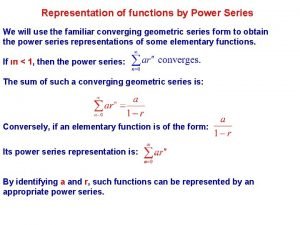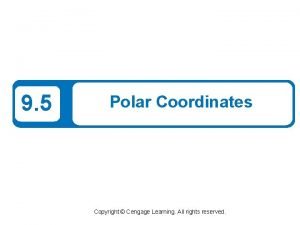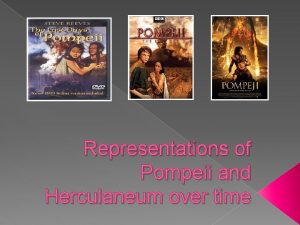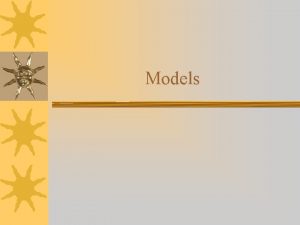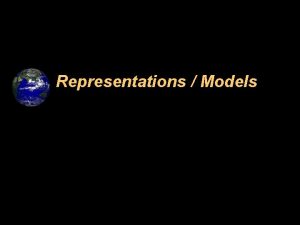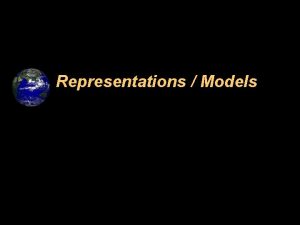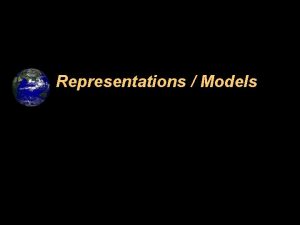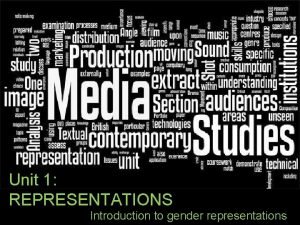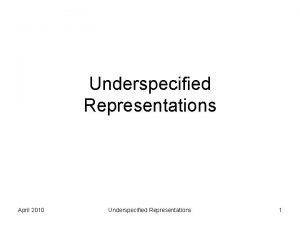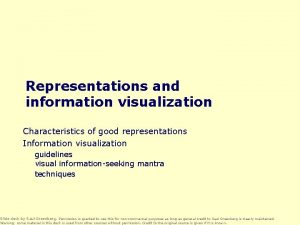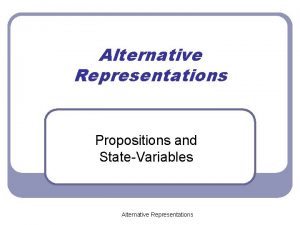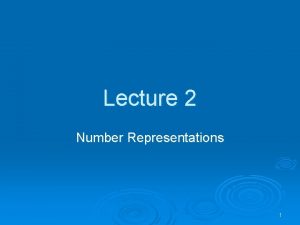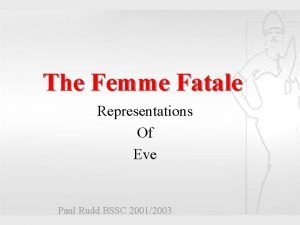Models Models Models are Patterns Plans Representations or











- Slides: 11

Models

Models • Models are • Patterns • Plans • Representations • or Descriptions designed to show the structure or workings of an object, system or concept.

Physical Models • Physical models are • Three-dimensional models • They closely resemble the object or system they represent (larger or smaller) • Teach scientists something new and help to further other discoveries.

Physical Models • Discover the structure of DNA. • Built based on the size, shape, and bonding qualities of DNA. • Figure out the potential structure of DNA. • Led the understanding of DNA replication.

Graphical Models • Maps and charts are the most common examples of graphical models. • Position of the stars • Amount of forest cover in a given area • Depth of the water in a river or along a coast.

Conceptual Models • Conceptual models are verbal or graphical explanations for how a system works or is organized. • A flow-chart diagram • Boxes linked by arrows to illustrate what a system contains, how those contents are organized, and how they affect one another.

Conceptual Model

Conceptual Models • Conceptual models can also be verbal descriptions or even drawings. • Structure of an atom describes the atom as one large ball being circled by several smaller balls. • An atomic model made using plastic balls is both a conceptual and physical model.

Mathematical Models • Mathematical models are one or more equations that represent the way system or process works. • Cases with many variables, such as the many things that affect the weather.

Mathematical Models • Use number and equations, they are not always right. • People are the ones who interpret the data and write the equations. • Models are only as good as the data that went into building them.

Mathematical Models • To create amazing, as well as useful images. • “False color” satellite images are created using mathematical models. • Scientists use the models to relate the amount of energy reflected from objects to the objects’ physical condition.
 Insidan region jh
Insidan region jh Elevation map grade 12 maths lit
Elevation map grade 12 maths lit Floor plan maths literacy grade 12
Floor plan maths literacy grade 12 Mathematical literacy grade 11 assignment topic measurement
Mathematical literacy grade 11 assignment topic measurement Maps plans and other representations of the physical world
Maps plans and other representations of the physical world Dating serves several important functions that include:
Dating serves several important functions that include: Mining frequent patterns associations and correlations
Mining frequent patterns associations and correlations Representations of functions as power series
Representations of functions as power series Isa written representations
Isa written representations Multiple representations of polar coordinates
Multiple representations of polar coordinates Representations of pompeii and herculaneum over time
Representations of pompeii and herculaneum over time Multiple representations
Multiple representations







